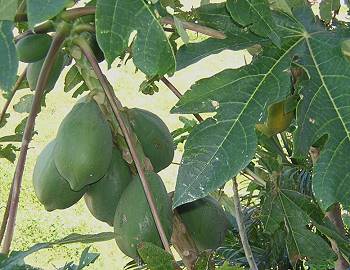Judging by the amount of products on the market to treat various stomach and digestive ills I feel safe in saying that what and how we eat our food is not agreeing with the average American. Take for example this recent article [June 27, 2008] at CNN: Food pairings: Working for or against you? In this article they provide information on what foods work well together and which food combinations you should avoid.
Recently I’ve gone back to school because I’m changing careers. The classes I’m taking are in the medical field, so when I found this article, “Food Combining & The American Diet“, I knew that they had the science of the human digestive system correct. This article has several tables of which foods can be combined together safely as well as what order you should eat your foods in. If you suffer from stomach pains after a meal this information could make a big difference in the quality of you life.
Then there is this article posted at MyDoctor2 which is an excerpt from “Tao of Health, Sex, and Longevity“, Daniel Reid, Fireside, New York, p 100:
Jehovah spoke unto Moses, saying, ‘I have heard the murmurs of the children of Israel: speak unto them, saying: “At evening ye shall eat flesh, and in the morning ye shall be filled with bread.” ‘ In other words, Jehovah instructed Moses in the rules of trophology, telling him to teach his people to eat their proteins and carbohydrates at separate meals. He also forbade them to consume milk and flesh together. This is the earliest and soundest dietary advice every recorded in Western civilization, but unlike Orientals, who still respect the wisdom of their ancient sages, Western folks spurn the teachings of the past as ‘outdated’ and ‘unscientific’. On the other hand, as the great American nutritional scientist Dr. Tilden pointed out, ‘Nature never produced a sandwich!’
Trophology by the way is the study of nutrition, or the study of correct food combining, depending upon where you look up the word. If you are thinking that all of this sounds good but will be too much work for you to try and pursue, I’ve one last link for you. Here you will find information on trophology and a nice chart to help you with your meal planning. You might want to print a copy and post it on the fridge.
It’s not only what we eat but how, and when, we eat it that defines our health and well-being. Remember the old adage, “an ounce of prevention is worth a pound of cure.”

